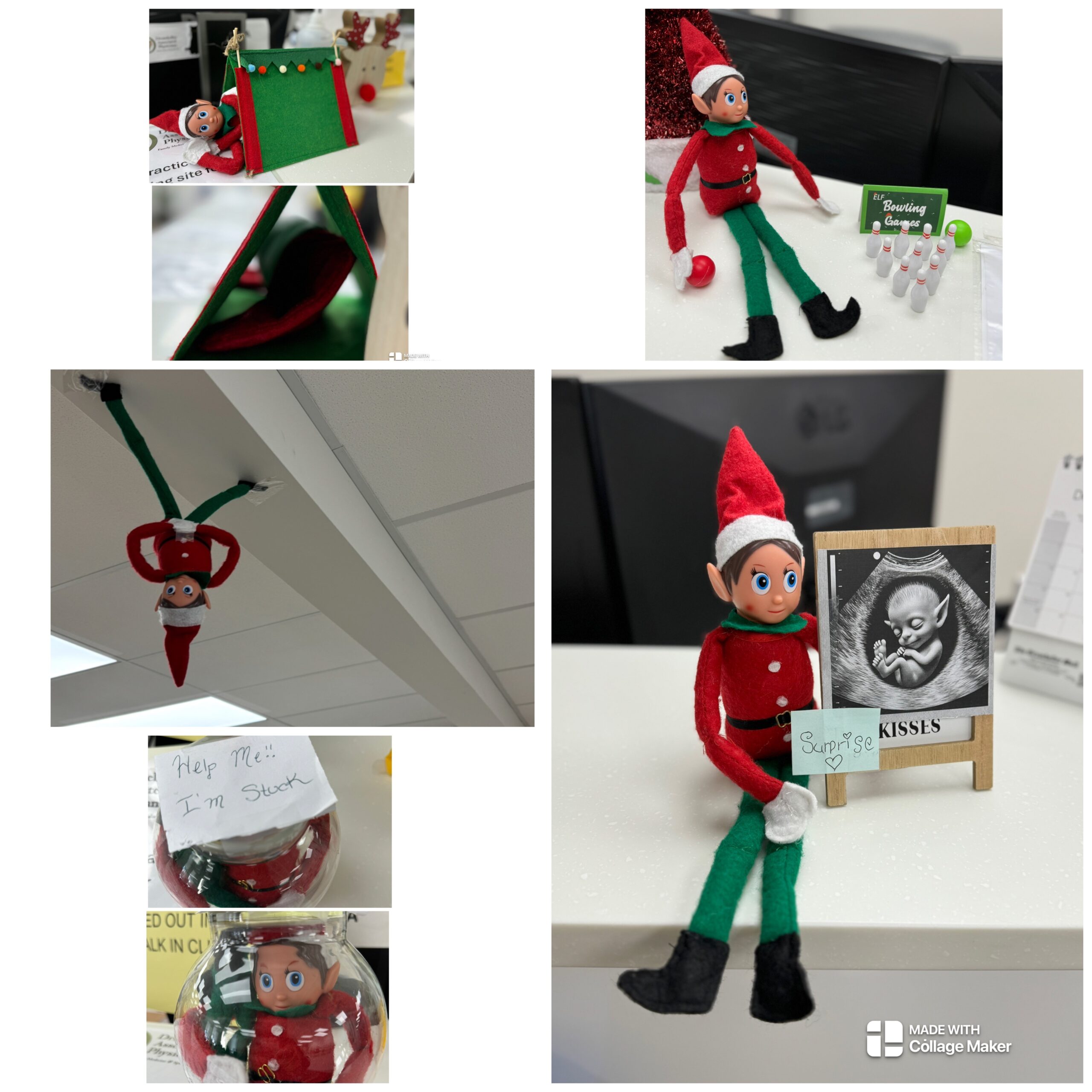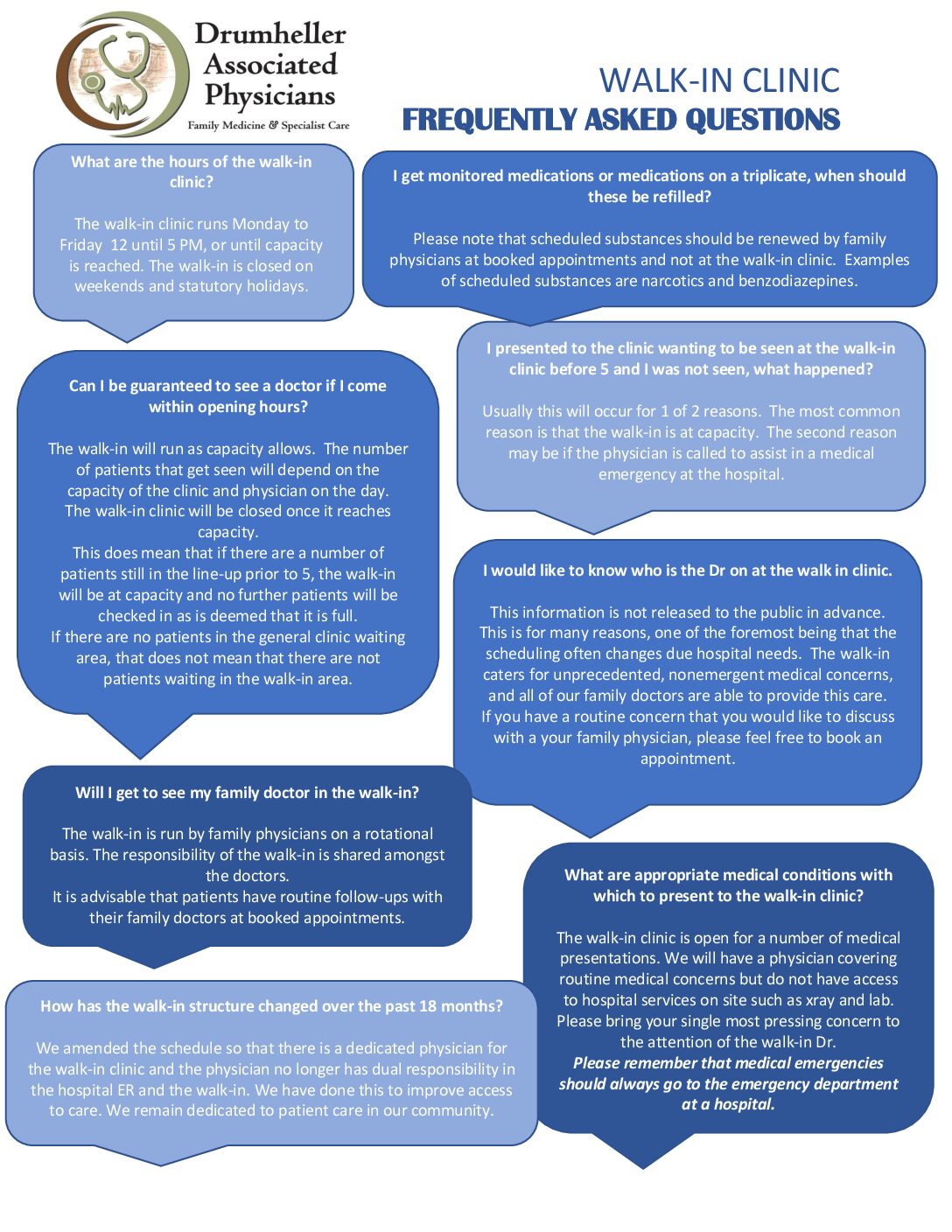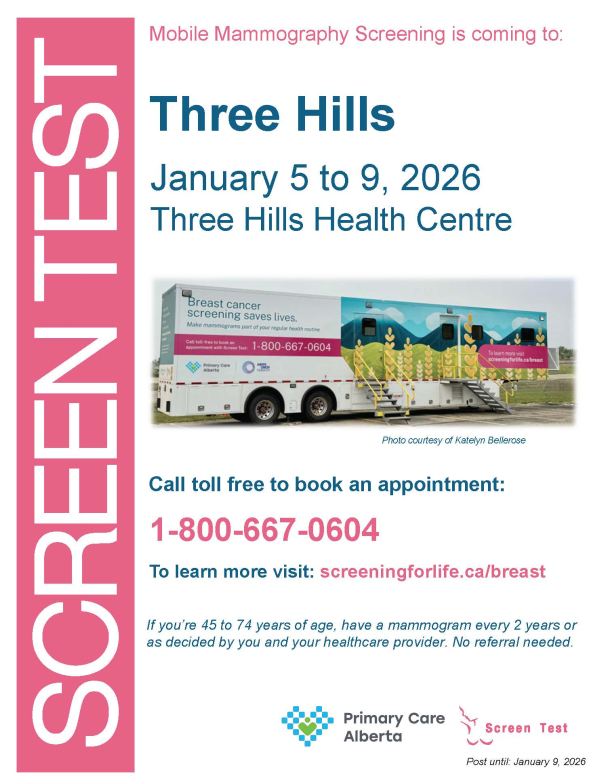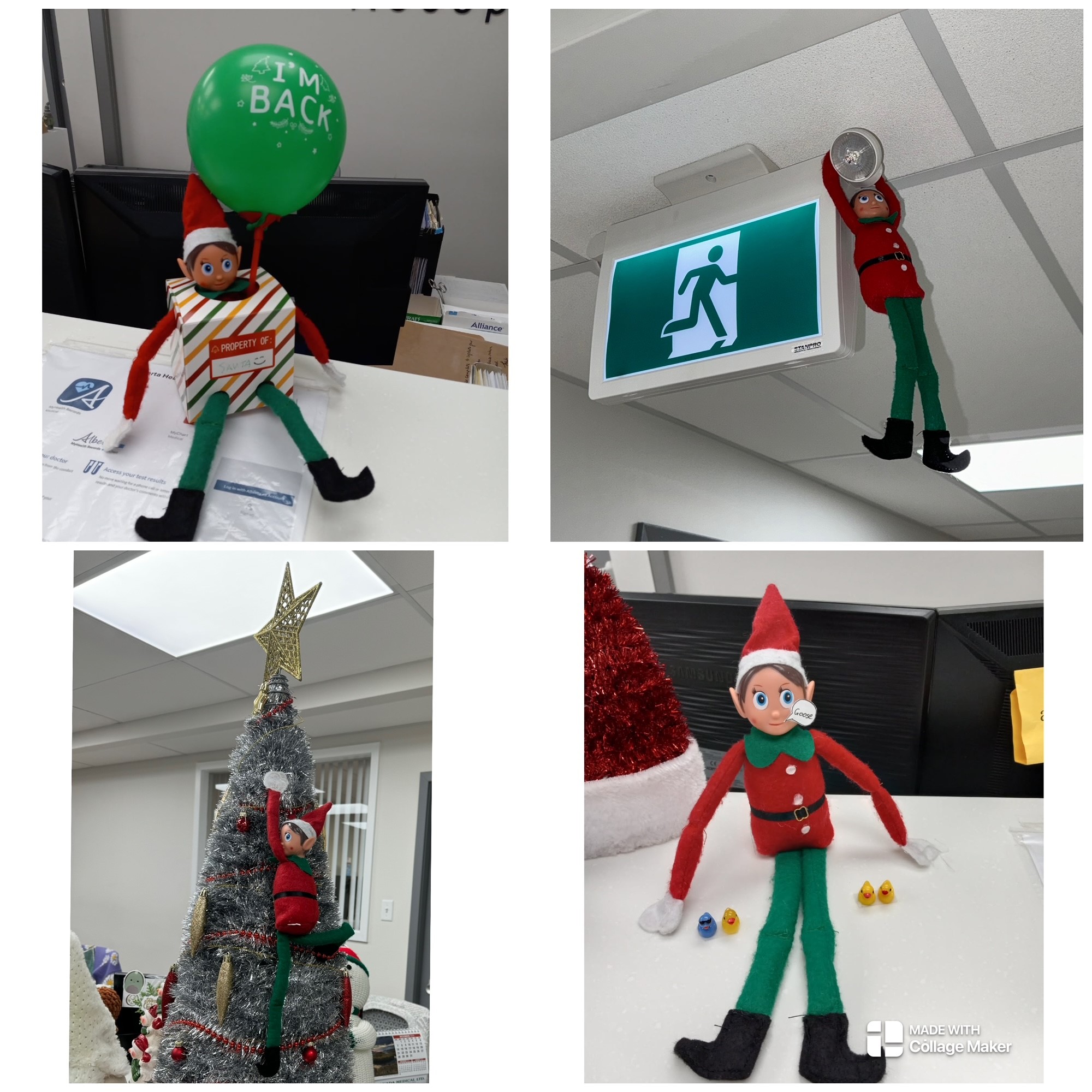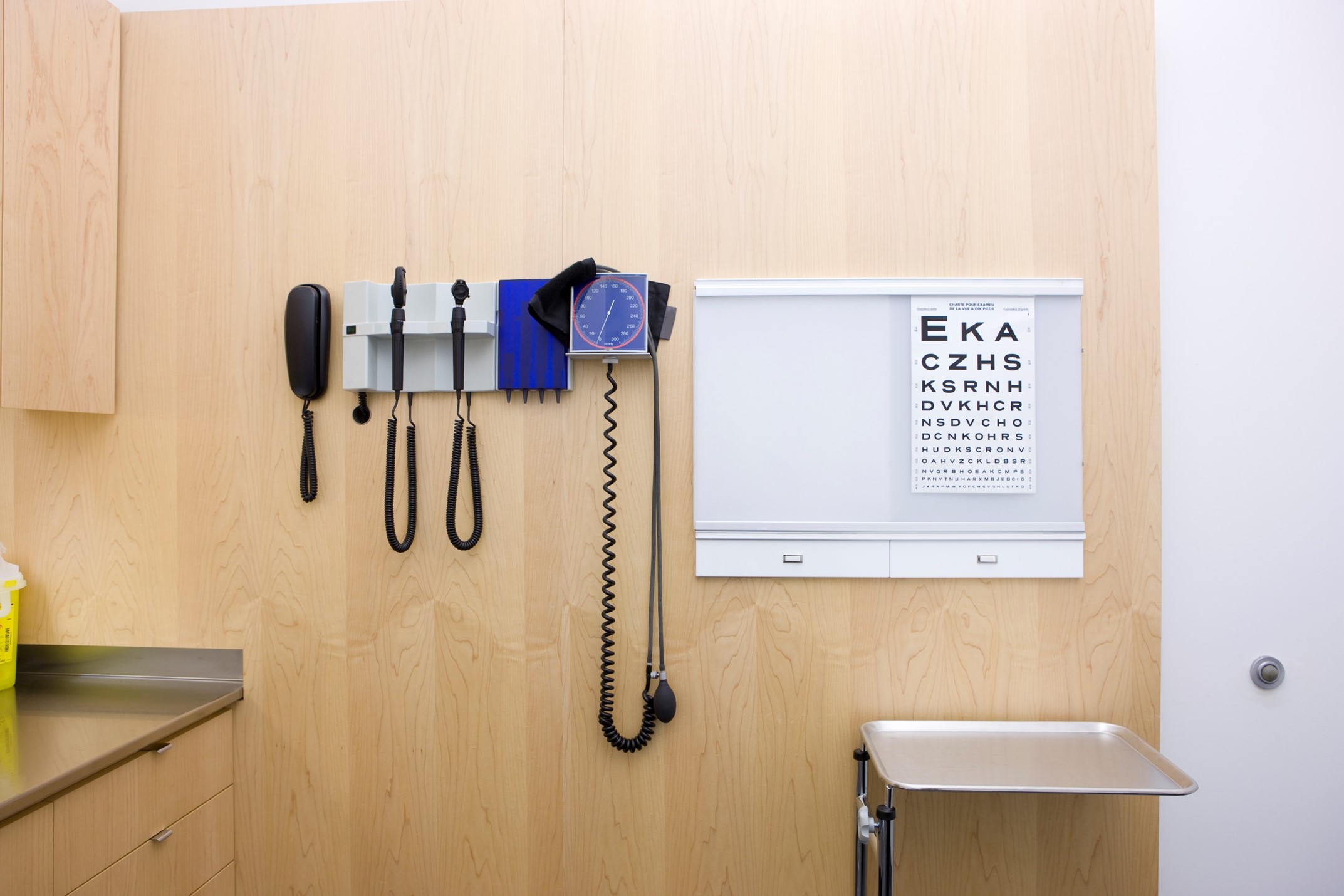The walk-in is open Monday – Friday excluding holidays, from 12:00 pm – 5:00 pm, or until capacity is reached. In the event that the walk-in hours change this will be posted on our social media and website.
For all Emergencies such as but not limited to: suspected broken bones, severe blood pressure elevations, shortness of breath or chest pain; please attend the Emergency Department at the Hospital.
If you are requiring immediate medical attention or unable to transport yourself safely to your nearest Health Centre dial 911.
If you need Medical Advice please dial 811 (Healthlink).
The Walk-In clinic is for non-emergency visits only.
The clinic is run in a first come, first served schedule.
Due to the time constraints of the Walk-In clinic schedule, patients are allocated one concern each. If you require a longer visit for multiple concerns please book an appointment to see your Primary Provider.
The following CANNOT be completed by the physician covering the Walk-In clinic and you must book an appointment with your Primary Provider for any of the following:
Forms
Triplicates/ controlled prescriptions ie. narcotics and benzodiazepines.
Drivers Medicals
Referrals
Complete Checks
Please be aware, that there may be urgent situations where the Walk-In schedule may need to be altered or the Walk-In clinic is closed. We make every effort to ensure our patients get the best care and the Walk-In schedule is only altered if absolutely necessary.
Your patience and understanding is appreciated.


